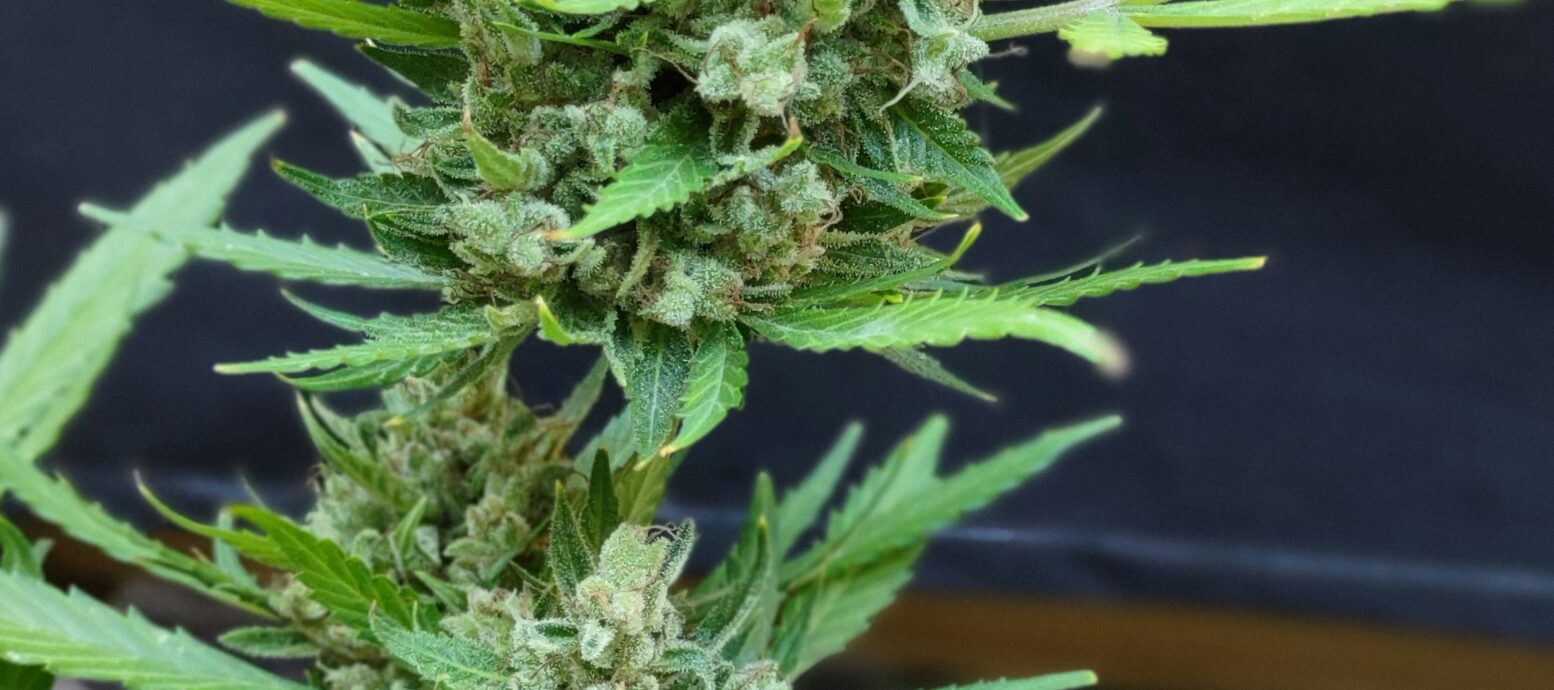Introduction to Skunk Strains
Skunk cannabis strains have garnered significant attention in the cannabis cultivation world due to their remarkable genetic traits and consistent high yields. Originally developed through selective breeding, skunk strains are descendants of landrace strains and hybrid varieties, showcasing the perfect blend of resilience and potency. Their genetic background can be traced back to the union of various indica and sativa strains, resulting in a well-rounded profile known for both its robust growth and distinctive characteristics.
The popularity of skunk strains among cannabis growers is driven primarily by their unique aroma and powerful effects. Typically, skunk strains emanate a pungent, earthy scent that is often accompanied by sweet and sour notes. This distinct smell has become a hallmark of skunk strains, making them easily recognizable and sought after in both commercial and personal cultivation. The olfactory signature of skunk strains plays a pivotal role in their appeal, as many growers and consumers value the aromatic profile as much as the psychoactive effects.
Moreover, skunk strains are renowned for their high yield potential. Many cultivators are drawn to these varieties as they can produce significant quantities of buds, even in less-than-ideal growing conditions. Skunk strains are characterized by their relatively short flowering time and sturdy growth structure, enabling them to thrive in a variety of environments, including indoor and outdoor setups. Consequently, cultivating skunk strains often results in a rewarding harvest, further solidifying their popularity among growers of all experience levels.
In light of their genetic robustness, distinctive aroma, and impressive yield capabilities, skunk strains represent a fascinating niche within the cannabis cultivation landscape. Their continuing popularity reflects an enduring legacy in the cannabis community, appealing to both novice growers and experts alike.
What Makes a Strain ‘Skunk’?
Skunk cannabis strains are renowned for their distinctive characteristics, primarily their pungent aroma and flavor profile, which is often described as skunky. This unique scent is largely attributed to the presence of specific terpenes, the compounds responsible for the aromatic qualities of cannabis. The predominant terpenes found in skunk strains include myrcene, caryophyllene, and limonene. Myrcene is particularly noteworthy, as it contributes earthy and musky scents typical of skunk, enhancing the overall experience for users.
Over the years, skunk cannabis strains have undergone significant evolution, evolving from landrace strains to highly sought-after hybrids. Early breeders recognized the appeal of the skunky scent and flavor, which led to a concerted effort to propagate these characteristics. From the original Skunk #1 developed in the late 1970s, various breeding techniques have been employed to refine these traits, ultimately resulting in several high-yield varieties that exhibit both potency and desirable aromas.
Hybridization has further played a crucial role in the development of skunk strains. By crossing skunk varieties with other cannabis plants, breeders have been able to produce hybrids that not only maintain the skunky essence but also enhance certain aspects such as cannabinoid content or growing resilience. As a result, modern skunk strains often offer higher yields, greater potency, and diverse effects, making them favorable among both growers and users. Overall, understanding the role of terpenes, breeding practices, and the historical context of skunk cannabis strains sheds light on their widespread popularity and significance in the cannabis community.
Benefits of Growing Skunk Cannabis Strains
Growing skunk cannabis strains presents a plethora of advantages that make them an attractive option for cultivators, whether novice or seasoned. One of the most significant benefits is their resilience against pests and diseases. Skunk strains have been selectively bred over the years to thrive in various conditions, resulting in plants that are less susceptible to common issues such as mold, mildew, and insect infestations. This resilience reduces the need for chemical pesticides, thus promoting a more organic growing environment.
Additionally, skunk cannabis strains are known for their relatively straightforward growth requirements. These strains typically exhibit robust growth patterns, which can significantly ease the cultivation process. Beginners can find comfort in the forgiving nature of skunk varieties, as they are more likely to flourish even with minimal experience. For expert growers, this ease of cultivation allows for efficient management of larger setups and enables them to focus on fine-tuning other growing factors, such as nutrient profiles and lighting optimization.
High yield potential is another standout feature of skunk cannabis strains. These varieties are known to produce generous quantities of buds, making them an ideal choice for growers looking to maximize their productivity. The combination of the plant’s hardiness and their ability to yield heavily makes skunk strains particularly valuable in both commercial and home cultivation settings. Growers can expect a high return on investment, particularly when optimum growing conditions are maintained.
Furthermore, diverse flavor profiles and potent effects are characteristics that many skunk strains possess. This aspect not only appeals to personal preferences but also caters to a broader market demand. The adaptability to various growing environments, alongside the potential for exceptional yields, establishes skunk cannabis strains as a preferred choice for cultivators at any expertise level.
Top 10 High-Yielding Skunk Strains
Skunk strains have long been recognized for their pungent aroma and robust growth characteristics. When it comes to high yield, several skunk varieties stand out among cannabis growers. Here, we present a list of the top 10 high-yielding skunk strains that not only promise substantial harvests but also deliver quality and flavor.
1. Skunk #1: A classic staple, Skunk #1 is a hybrid strain known for its balance of indica and sativa traits. It can yield up to 600 grams per square meter when cultivated indoors. The plant exhibits a quick flowering time and produces a sweet, earthy flavor suitable for many palates.
2. Super Skunk: This strain is a refined version of the original Skunk #1, yielding approximately 700 grams per square meter. Super Skunk is known for its dense buds and a powerful, skunky aroma that entices consumers with its rich flavor profile featuring hints of spice and sweetness.
3. Skunk XL: A cross between classic skunk genetics and hybrid vigor, Skunk XL generates yields of up to 800 grams per square meter. It has a quick flowering time, and its flavor combines earthy notes with a citrusy undertone, making it a favorite among growers.
4. Big Bud Skunk: This strain expertly combines the generous yields of Big Bud with the iconic skunky flavor. Growers can expect up to 1,000 grams per plant outdoors, with large, resinous buds that deliver a sweet, fruity flavor complemented by earthy undertones.
5. Critical Skunk: A fusion of Critical Mass and Skunk genetics, this high-yield variety can produce around 700 grams per square meter. Critical Skunk offers a fruity and tangy flavor, making it delicious for consumers and rewarding for cultivators.
6. White Skunk: Known for its potent effects, White Skunk typically yields around 600 grams per square meter. This strain has a creamy flavor profile, with hints of sweetness and earthiness that appeal to a broad audience.
7. Afghan Skunk: A robust choice, Afghan Skunk thrives both indoors and outdoors, yielding up to 800 grams per plant. Its flavor is deeply herbal, featuring hints of spice, which complements its potent effects.
8. Lemon Skunk: With its zesty aroma, Lemon Skunk can yield around 600 grams per square meter. This strain marries the skunky essence with a delightful citrus flavor, appealing to connoisseurs who appreciate a refreshing twist.
9. Skunk 47: A mix of AK-47 and Skunk #1, Skunk 47 yields between 600 to 700 grams per square meter. This hybrid strain provides a complex flavor profile, weaving together fruity and skunky notes that captivate the senses.
10. Pineapple Skunk: This tropical variant can produce around 650 grams per square meter and boasts a sweet, fruity aroma reminiscent of fresh pineapples. Its unique flavor and substantial yield make it a popular choice among growers.
These top 10 high-yielding skunk strains stand out for their exceptional productivity and flavorful profiles. Cultivators can look forward to rewarding harvests while enjoying distinct and pleasurable experiences from each strain.
Growing Tips for Skunk Strains
Cultivating skunk cannabis strains requires a tailored approach to maximize both yield and quality. These varieties are known for their distinct aroma and robust growth patterns, making them popular among growers. Understanding optimal growing conditions is crucial for successful cultivation. Skunk strains thrive in a warm, dry climate with temperatures ranging between 70°F to 85°F (21°C to 29°C) during the day. Ensuring proper ventilation and humidity control helps prevent mold and mildew, which can be detrimental to yield.
Nutrient requirements for skunk varieties are pivotal in achieving healthy plants. A balanced nutrient regimen is essential, with emphasis on nitrogen during the vegetative stage to promote leaf growth and a focus on phosphorus and potassium during flowering for robust bud development. Utilizing organic fertilizers can enhance soil health and improve the flavor profile of the final product. Regular soil testing is advised to gauge nutrient levels and make necessary adjustments.
Watering techniques also play a significant role in the cultivation of skunk strains. It is essential to keep the soil moist but not waterlogged. A good practice is to allow the top inch of soil to dry out before the next watering, promoting healthy root development. Growers should be mindful of the watering frequency, as it may vary depending on environmental conditions and the stage of growth.
Pruning techniques contribute significantly to the productivity of skunk cannabis strains. Regular trimming of lower branches, known as lollipopping, encourages the plant to direct its energy towards the main colas, enhancing yield. Additionally, employing low-stress training (LST) techniques can help to manipulate the plant’s shape and maximize light exposure. By incorporating these practical growing tips, cultivators can enhance the success of their skunk strain endeavors.
Common Challenges and How to Overcome Them
Growing skunk cannabis strains can be a rewarding endeavor, but it also comes with its unique set of challenges. One of the primary concerns for growers is managing the strong odor associated with these varieties. The pungent scent can become overwhelming, especially during the flowering phase. To mitigate this issue, growers can invest in carbon filters and air purification systems, which help to neutralize odors. Additionally, strategically placing plants outdoors or using odor-neutralizing gels can be effective in controlling strong smells.
Another challenge faced by skunk cannabis cultivators is dealing with pests and diseases. These strains can be susceptible to aphids, spider mites, and powdery mildew. Implementing an Integrated Pest Management (IPM) approach is essential for safeguarding plants. This can include regular inspections to catch infestations early, introducing beneficial insects like ladybugs, and utilizing organic pest control products. Maintaining cleanliness in the growing area and ensuring proper air circulation can also significantly reduce the likelihood of pest problems.
Environmental conditions play a crucial role in the successful cultivation of skunk strains. These plants typically thrive in specific temperature and humidity ranges. Growers should monitor these conditions closely and make adjustments as necessary. Using temperature and humidity controllers can help maintain the optimal environment for plant growth. Furthermore, ensuring adequate light exposure is vital, as insufficient lighting can lead to stunted growth and lower yields. Easy-to-install grow lights with adjustable settings can assist in providing the necessary light spectrum for healthy plant development.
By anticipating and addressing these common challenges, skunk cannabis growers can foster a more robust growing environment, ultimately leading to successful and bountiful harvests.
Harvesting and Curing Skunk Strains
The harvesting and curing of skunk cannabis strains are critical processes that significantly influence the final quality of the product. Knowing when to harvest is essential for maximizing both yield and potency. Generally, the ideal time to harvest skunk strains is when the trichomes, or the small resin glands on the buds, change from clear to a milky white appearance. The presence of amber trichomes indicates that the plant is at its peak potency, and harvesting at this stage can enhance the effects of the strain.
After determining that the skunk plants are ready for harvest, the next step involves cutting and processing the plants. It is advisable to take care when trimming the buds from the plant to preserve the integrity of the flowers. Using sharp and sterilized scissors, cut the branches or the entire plant at the base, ensuring minimal damage to the leaves and trichomes. This step is crucial in maintaining the desired flavor and aromatic profile of the skunk strains. Some growers prefer to hang the entire plant upside down to dry, while others may opt for individual branch drying based on available space and preference.
Once the skunk strains are adequately dried, curing becomes the next important phase. Curing enhances the flavor profile and smoothness of the smoke. For effective curing, transfer the dried buds into airtight glass jars, filling them only about 70% full to ensure airflow. Initially, open the jars daily for several minutes to allow moisture to escape and fresh air to circulate. This process, referred to as ‘burping,’ helps prevent mold and ensures that the buds cure properly over time. The skunk strains will benefit from a curing period of at least two weeks, although some growers prefer to cure for a month or longer to achieve optimal flavor and potency. Proper harvesting and curing techniques are vital for achieving high-quality skunk cannabis strains, providing an enjoyable experience for both growers and consumers.
User Experiences and Reviews
The cultivation of skunk cannabis strains has garnered substantial interest among growers and consumers alike, primarily due to their distinctive aromas and potent effects. Many users report that prominent skunk varieties, such as Skunk #1, consistently provide an enjoyable balance of relaxation and euphoria. This hybrid strain has been noted for its robust structure and high yield, making it a preferred choice for both novice and experienced cultivators. Growers have shared experiences indicating that Skunk #1 flourishes well in various environments, contributing to its popularity in home gardens.
Another widely acclaimed strain is Super Skunk, which is frequently celebrated for its intense floral and citrus flavors complemented by underlying skunky notes. Users have described the experience of consuming Super Skunk as deeply relaxing, helping mitigate stress while enhancing creative thinking. Many reviews highlight its favorable outcomes for those dealing with insomnia or anxiety, validating its medicinal attributes. Cultivators have noted that this variety can reach impressive yields, particularly when provided with proper care and attention.
The variety known as Skunk Special has also captured the attention of users due to its well-rounded effects and delightful terpene profile. Reports suggest that this strain delivers a satisfying blend of sweetness and skunky earthiness, appealing to those who appreciate complex flavors. Feedback from growers indicates that Skunk Special is resilient against common cultivation challenges, making it an excellent choice for those experimenting with skunk varieties for the first time.
In summary, user experiences and reviews of top skunk cannabis strains illustrate consistent satisfaction among consumers and cultivators. The combination of flavor, effects, and high yield potential positions these strains as favored options within the cannabis community, guiding prospective growers towards informed selections in their cultivation endeavors.
Conclusion: Why Choose Skunk Strains for Your Garden
Skunk cannabis strains have established themselves as a prominent choice among cannabis growers due to their unique combination of high yields, robust flavors, and resilience. One of the foremost advantages of incorporating skunk strains into your cultivation plans is their impressive productivity. These strains are well-known for their ability to produce substantial harvests, making them an ideal option for growers seeking to maximize their output. The distinctive genetic background of skunk strains often leads to dense buds with a heavy resin content, appealing to both recreational and medicinal users.
Another reason to consider skunk strains for your garden lies in their diverse flavor profiles. Skunk cannabis offers a pungent aroma that can range from earthy and spicy to sweet and fruity. This complexity not only enhances the overall user experience but also attracts a broader array of consumers. As cannabis continues to evolve, skunk strains remain popular for those looking for a taste that is both bold and memorable.
Furthermore, skunk genetics are often associated with resilience and adaptability. These strains typically show a strong resistance to pests and diseases, increasing their chances of thriving in various growing conditions. Whether you are an experienced cultivator or a novice entering the world of cannabis gardening, skunk strains can prove to be reliable companions in your journey.
Ultimately, the choice to incorporate skunk strains into your cultivation plans can lead to fruitful outcomes. Their high yield potential, rich flavor profiles, and robustness make them an appealing option for cannabis enthusiasts. By selecting these strains, growers can expect not only a successful harvest but also a fulfilling growing experience.












